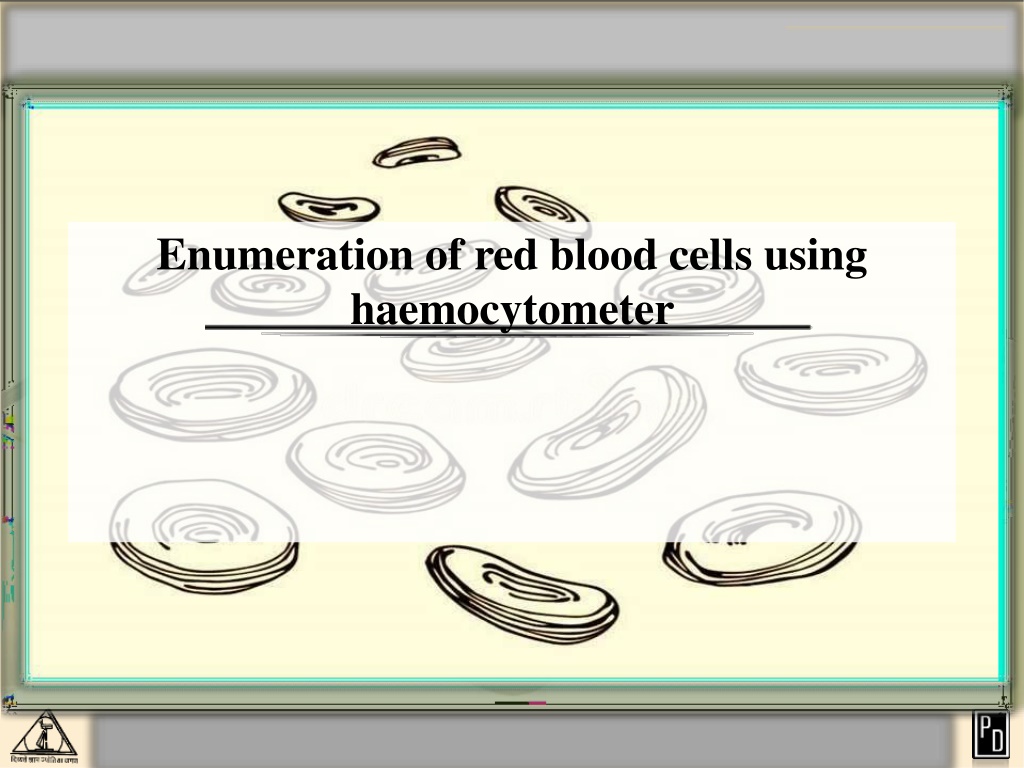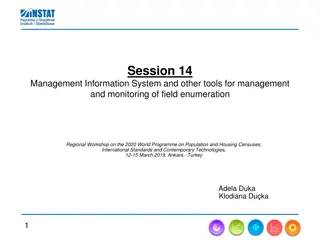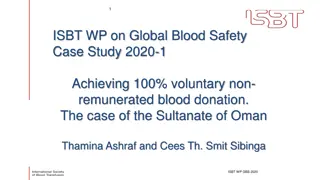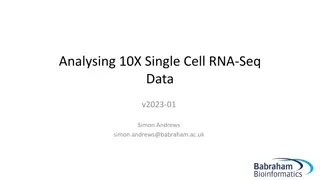Understanding Blood Cell Enumeration Using Haemocytometer
Enumeration of red blood cells using a haemocytometer is crucial to assess blood profiles for conditions like anemia or polycythemia. This process involves manual counting with a specialized apparatus called a Neubauer chamber. The chamber's design includes specific grids and squares for accurate cell counting, ensuring precise results for medical diagnosis.
Download Presentation

Please find below an Image/Link to download the presentation.
The content on the website is provided AS IS for your information and personal use only. It may not be sold, licensed, or shared on other websites without obtaining consent from the author. Download presentation by click this link. If you encounter any issues during the download, it is possible that the publisher has removed the file from their server.
E N D
Presentation Transcript
Genetics Enumeration of red blood cells using haemocytometer
Red Blood Cell Count To know whether an individual has normal blood profile, or anaemic or polycythemic, complete blood count is necessitated. RBCs is either counted manually or through machine. RBCs are manually counted with the help of specialized apparatus known as Haemocytometer. Ahaemocytometer is a counting chamber invented by Louis-Charles Malassez. It includes: ANeubauer s slide Cover slip RBC pipette WBC pipette
Red Blood Cell Count Neubauer s slide
Red Blood Cell Count Neubauer s slide It is a thick glass slide. In the center of the slide, there is an H shaped groove. On the two sides of the central horizontal bar, there are scales for counting the blood cells 1 ?? or 0.1mm. 10 The depth of the scales is Each scale is 3mm wide and 3mm long, i.e. 9mm2. The whole scale is divided into 9 large squares. Each large square is 1mm long and 1mm wide, i.e. 1mm2. The large squares are further divided in 3 directions; 0.25 x 0.25 mm (0.0625mm2), 0.25 x 0.20mm (0.05mm2) and 0.20 x 0.20mm (0.04mm2).
Red Blood Cell Count Neubauer s slide The central square is further subdivided into 0.05 x 0.05mm (0.0025mm2) squares. The raised edges hold the coverslip 0.1mm off the grid giving each square a defined volume.
Red Blood Cell Count RBC Pipette WBC Pipette
Red Blood Cell Count Dilution factors For cells counting Blood is filled till mark 0.5 and fluid is then filled till mark 101 or 11. Both are thoroughly mixed.
Red Blood Cell Count Methodology Clean the Neubauer chamber and the cover slip with 70% ethanol. With the microscope, using a 4x objective, identify the nine main squares of the chamber delimited by three lines each as shown in the following image. Now changes to 10x objective and focus one of the 9 main squares. The counting is performed in the area delimited by three lines. Cells that touch the upper an d left border are counted (black colour), while cells that touch the right and lower border are not counted.. Area of square bounded by 3 lines is 0.04mm2. Area of small square within the large square is 0.0025mm2.
Red Blood Cell Count Principle - In order to facilitate RBCs count, a specified volume of blood is diluted with a specified volume of isotonic fluid, which must have property of an anti-cougulant, anti- haemolysis, anti-aggregation, anti-Rouleaux, and preserve RBC shape. Reagents - Diluting fluid used might be 0.85% sodium chloride (NaCl) in distilled water, Hayam s solution (Sodium sulfate 10g, Sodium chloride 2g, Mercuric chloride 0.25g, DW 100ml), Gower s solution (Sodium sulfate 12.5g, Glacial acetic acid 33.3ml, DW 100ml), Citrate-formalin solution (Tri-sodium citrate & formalin). - Hayam s solution may cause clumping of RBCs and Rouleaux formation in some cases, therefore generally it is avoided. Sample - Whole blood using EDTA or heparin as anticoagulant. However, capillary blood may also be used.
Red Blood Cell Count Equipments 1. Pipettes Thoma peipette (RBCs) or micropipette 20 microlitre is the desired volume. 2. Improved Neubauer chamber with the cover slips. 3. Light microscope. 4. Clean gauze Procedure 1. Dilute the blood (1:200 dilution) Draw the blood up to exactly the o.5 mark and dilute to the 101 mark or pipette 4.oml of diluting fluid into a tube and mix by pipetting 20 microlitre of well mixed anticoagulated whole blood. 2. Load the cleaned haematocytometer. 3. Place the haematocytometer on the microscope stage and focus the counting chamber with 10x objective lens on the large central square, which is ruled into 25 small squares, each of which is further divided into 16 smaller squares.
Red Blood Cell Count Procedure 4. Count RBCs in the 4 corner squares and 1 middle square out of 25 squares. 5. Switch to 40x objective lens, and start counting in the five designated squares.
Red Blood Cell Count Calculation Total RBC count = N X Dilution factor X Volume correction factor Where: N = the total number of red blood cells counted in the counting chamber. Dilution factor = 200 (since it is 1: 200) Counted volume: - Each counted square has a volume of 0.2 x 0.2 x 0.1 = 0.004. - 5 squares volume = 5 x 0.004 = 0.02 cc - Volume correction factor = 1/0.02 = 50 Therefore, Total RBC = N x 200 x 50 = N x 10,000
Further reading Bain B.J., Bates I., Laffan M.A. 2016. Dacie and Lewis Practical Haematolog. Elsevier Health Sciences, Philadelphia, USA Singh T. 2017. Text and Practical Haematology for MBBS.Arya Publications, New Delhi, India

















































